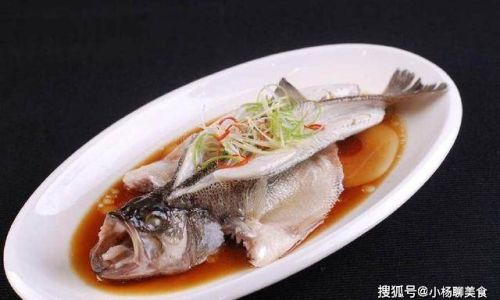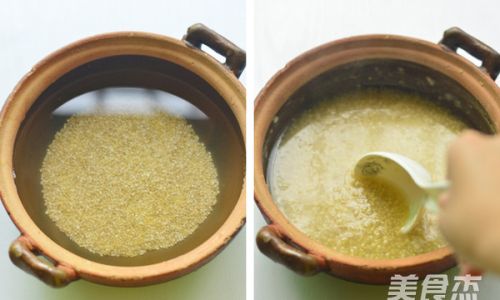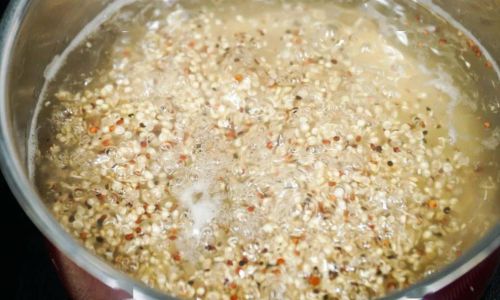Introduction
Steamed sea bass, known for its delicate flavor and moist texture, is a culinary delight enjoyed by many. Whether you’re preparing it for a family dinner or a special occasion, achieving the perfect doneness is crucial to unlocking its full potential. However, determining when your sea bass is cooked to perfection can be a bit tricky, especially if you’re new to steaming fish. In this comprehensive guide, we’ll delve into various methods and techniques to help you ascertain whether your sea bass is steamed just right. From visual cues to more advanced techniques, we’ll cover everything you need to know to ensure your sea bass is neither overcooked nor undercooked.

Understanding the Importance of Proper Cooking
Before we dive into the specifics of how to check for doneness, let’s first understand why it’s so important to cook sea bass correctly. Overcooking can lead to a dry, flavorless fish, while undercooking can pose food safety risks and result in a fishy taste. Properly cooked sea bass should be moist, tender, and flaky, with a delicate flavor that’s neither too strong nor too mild.
Preparing Your Sea Bass for Steaming
Before you start steaming, there are a few preparation steps you should follow to ensure the best results:
-
Choosing the Right Fish: Start with fresh, high-quality sea bass. Look for fish with firm flesh, clear eyes, and a fresh, mild scent. Avoid fish with a strong fishy odor or slimy texture.
-
Scaling and Cleaning: Scale the fish if necessary and thoroughly clean it inside and out. Remove any internal organs and gills, and rinse the cavity well under cold running water. Pat the fish dry with paper towels to remove excess moisture.
-
Seasoning: Lightly season the fish with salt, pepper, and any other desired spices or herbs. You can also place slices of ginger and scallions inside the cavity to enhance flavor.
-
Slicing: For even cooking, you may want to score the fish on both sides. Make shallow diagonal cuts across the flesh, spacing them about an inch apart. This allows the steam to penetrate more evenly and helps the seasoning penetrate deeper.
Steaming Techniques
Now that your sea bass is prepared, let’s move on to the steaming process. There are several methods you can use, depending on your equipment and preferences:
-
Traditional Steamer: If you have a traditional bamboo or metal steamer, fill the base with water to just below the level of the steaming rack. Bring the water to a boil, then place your seasoned sea bass on the rack. Cover the steamer and steam for about 8-12 minutes, depending on the thickness of the fish.
-
Pot with Steaming Rack: If you don’t have a steamer, you can use a large pot with a steaming rack or a metal colander. Fill the pot with water to about an inch below the rack, bring it to a boil, and proceed as you would with a traditional steamer.
-
Aluminum Foil Packet: For a simpler method, you can create a steaming packet using aluminum foil. Place your seasoned fish on a piece of foil, fold it over to create a seal, and make a few small holes on top to allow steam to escape. Place the packet on a steaming rack or in a pot with boiling water and steam for the same amount of time.
-
Microwave Steaming: While not traditional, you can also steam sea bass in the microwave. Place the fish on a microwave-safe dish with a few tablespoons of water in the bottom. Cover the dish with a microwave-safe lid or plastic wrap (vented to allow steam to escape), and microwave on high for about 4-6 minutes, depending on the microwave’s power and the size of the fish.
Checking for Doneness
Now that your sea bass is steaming, how do you know when it’s done? Here are several methods you can use to determine doneness:

-
Visual Inspection: One of the simplest methods is to visually inspect the fish. Look for a change in color from translucent to opaque. The flesh should turn a pale white or light pink, indicating that it’s cooked. However, color alone isn’t always reliable, so it’s best to use this method in conjunction with others.
-
Temperature Check: Using a food thermometer is a more accurate way to check for doneness. Insert the thermometer into the thickest part of the fish, avoiding any bones. The internal temperature should reach 145°F (63°C) for food safety. However, sea bass is best enjoyed at a slightly lower temperature, around 130-135°F (54-57°C), to maintain its moistness and tenderness.
-
Fork Test: Another common method is the fork test. Carefully insert a fork into the thickest part of the fish and gently twist. The flesh should flake easily and separate from the bones. If it’s still resistant or stringy, it needs more cooking time.
-
Probe Test: For those who prefer a more precise method, a food probe or instant-read thermometer can be used. Insert the probe into the thickest part of the fish, ensuring it doesn’t touch any bones. Wait a few seconds for the thermometer to register the temperature. As mentioned earlier, the ideal temperature range is around 130-135°F (54-57°C).
-
Touch Test: Experienced cooks often rely on the touch test. Carefully lift the fish with a spatula or tongs and gently press on the flesh with your finger. It should feel firm but give slightly when pressed. If it feels mushy or too soft, it’s likely overcooked.
-
Steam and Aroma: Pay attention to the steam and aroma coming from the steamer. When the fish is cooked, the steam will have a mild, pleasant aroma, and the fish will release a subtle, cooked fish scent. If the aroma becomes too strong or unpleasant, it’s a sign that the fish may be overcooking.
Avoiding Common Pitfalls
To ensure your sea bass is perfectly steamed, avoid these common pitfalls:
- Overcrowding the Steamer: Don’t steam too many pieces of fish at once. Overcrowding can prevent even steam distribution, leading to uneven cooking.
- Using Too Much Water: Keep the water level in the steamer base low enough to prevent it from touching the fish or steaming rack. Too much water can cause the fish to sit in steamy water, which can make it soggy.
- Opening the Steamer Too Often: Every time you open the steamer lid, you release steam and reduce the temperature inside. Try to avoid opening it until you’re ready to check for doneness.
- Ignoring Cooking Time: While cooking times can vary based on the thickness of the fish and the steaming method, it’s important to keep an eye on the clock. Overcooking can happen quickly, so be vigilant.
Serving and Enjoying
Once your sea bass is perfectly steamed, it’s ready to be served. Transfer it to a serving plate, garnish with fresh herbs like cilantro or parsley, and drizzle with a bit of soy sauce, sesame oil, or your favorite sauce. Serve immediately to retain its moisture and flavor.
Pair your steamed sea bass with sides like steamed rice, stir-fried vegetables, or a light salad for a complete, balanced meal. Enjoy the delicate texture and fresh flavor of perfectly cooked sea bass, and impress your guests with your culinary prowess.
Conclusion
Steaming sea bass is a simple yet elegant way to enjoy this versatile fish. By following the preparation steps, using the right steaming method, and checking for doneness with a combination of methods, you can achieve perfectly cooked sea bass that’s moist, tender, and flavorful. With a bit of practice, you’ll soon be able to determine when your sea bass is ready without even needing to check, relying instead on your well-honed instincts and culinary skills. Happy steaming!




0 comments